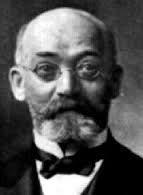Esperanto: A Language For All?

L.L. Zamenhof created the Esperanto language in 1887.
March 11, 2016
Learning a language can be challenging. We’ve all been there; rules, exceptions, words, and even more exceptions. It can be daunting at times, which is unfortunate because language is the only way to communicate internationally. A simple solution might be a language used by all international entities to communicate, which has a simplified grammar and an easy way to learn. That is exactly what the Esperanto language is.
Created in 1887 by Dr. L. L. Zamenhof, the language was supposed to help remove language barriers between countries in order to unify the world. Zamenhof had noticed language problems firsthand when he realized that his city was divided into four ethnicities, each with its own language. Esperanto may take a learner only a few months to master, as opposed to other languages.
With over two million users worldwide and 2,000 native speakers, it may seem like the obvious choice to learn the language. However, Esperanto can be difficult for non-European language speakers. The vocabulary, which was supposed to be universally accommodating, is derived from European languages, and the the alphabet is very similar to the Latin alphabet. Additionally, the language is mostly masculine as opposed to feminine, which gives the impression that the language is partial.
Whether or not Esperanto will become a major language remains a mystery. It has a thriving Wikipedia page as well as a community of speakers around the world. Additionally, many books have been translated into the language. You can even use Google Translate to translate into Esperanto. I’ll leave you with a few common phrases in Esperanto:
| Hello | Saluton |
| Yes | Jes |
| No | Ne |
| Good morning | Bonan matenon |
| Goodbye | Ĝis (la) revido |
| What is your name? | Kio estas via nomo? |
Justin Oei • Mar 14, 2016 at 9:34 pm
We could always go back to Latin as a common language…